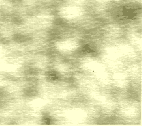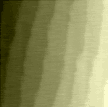
Oxide surface dynamics

Oxide surface dynamics
The thin film crystal growth process is affected by both thermodynamics (temperature) and kinetics (growth rate). The kinetic aspect is particularly important for pulsed laser deposition because the growth is intermittent. At the moment when a plasma plume reached the substrate, surface has very high supersaturation and the incident atoms may have high kinetic energy, up to about 100 eV. This rapid adatom pulse is followed by a long relaxation period when atoms can migrate and the surface morphology evolves. Achieving control over the stoichiometry and morphology of a thin film surface is thus a complex problem. We are working on several related issues:
The most important substrate material for us is SrTiO3. This is a high-quality substrate and also a prototype perovskite material
The first step in using SrTiO3 is substrate preparation, i.e., transforming a rough polished surface into a step-and-terrace surface that is well ordered, even on an atomic scale. This is a surprisingly complex process and a good starting point for oxide growth dynamics studies.

Polished SrTiO3

Annealed SrTiO3